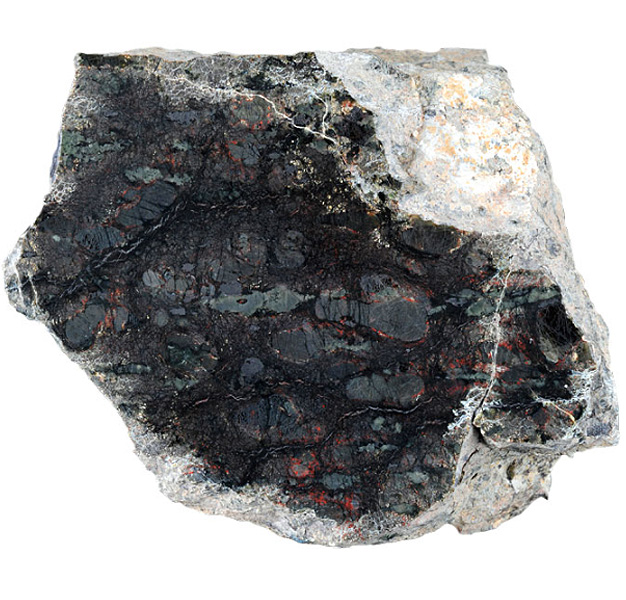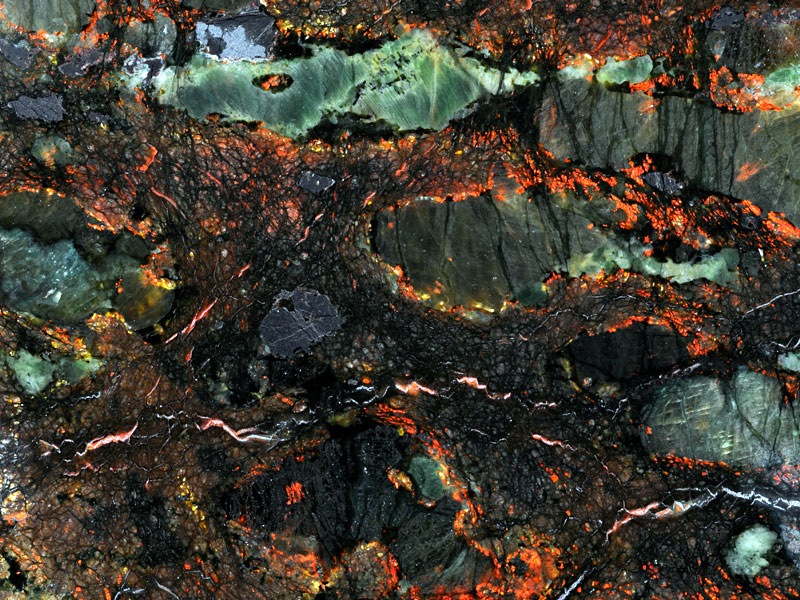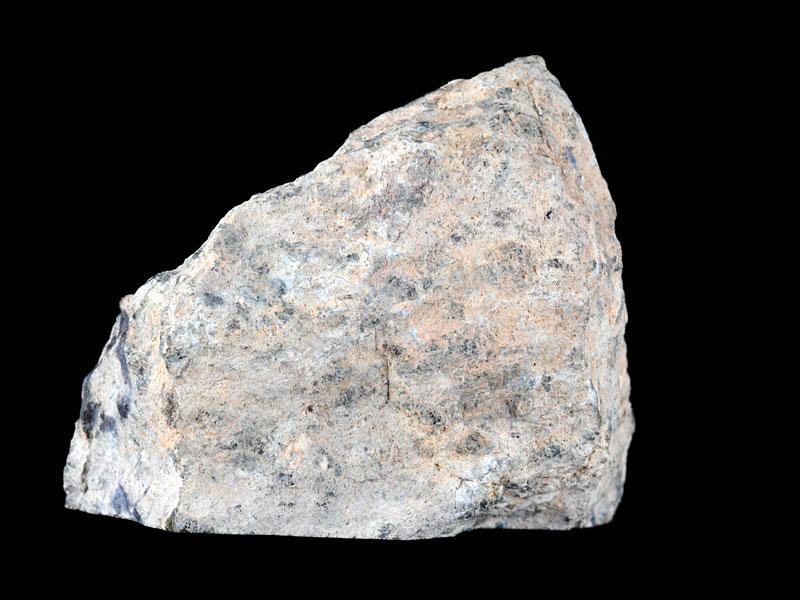
Fact sheet
This sample of altered peridotite forms part of a suite of rocks (the Lizard Complex in Cornwall) that represents a cross-section of Devonian-age oceanic crust, from surface volcanic rocks deep into the peridotite of the underlying mantle. The Lizard Complex, preserved during the continent–continent collision known as the Variscan orogeny, is the best example of an ophiolite complex in the UK. Although this peridotite originally formed as an igneous rock composed mostly of olivine, it has been completely altered to serpentine by interaction with sea water.
In thin section the rock appears pale green, a colour caused by the serpentine minerals that are formed by the breakdown of olivine. Other clay minerals and metal oxides (opaque in thin section) are also formed by breakdown reactions and are evident in the thin section. The alteration minerals are found in cracks and veins where fluids penetrated the rock on scales from one millimetre down to a few microns. Fragments of olivine remain, and can be observed as small highly birefringence grains separated by networks of veins filled with alteration products. Partially altered olivine fragments are most prominent in the upper right-hand quadrant of the thin section. The remaining large grains in the thin section are highly cracked and veined pyroxene, and dark-brown-coloured spinel that is also cracked but exhibits less alteration.
The United Kingdom Virtual Microscope (UKVM) collection consists of igneous, sedimentary and metamorphic rocks from around the UK.
It is intended as a teaching resource, helping to tell the story of the common rock types and how they form, and reflecting the history of the UK at the margins of the continent of Europe. The collection is a series of teaching sets, for example igneous rocks from the North Atlantic Igneous Province and SW England; high-temperature metamorphic rocks from Scotland and low-temperature metamorphic rocks from Wales; and sedimentary rocks, including English limestones and sandstones.








